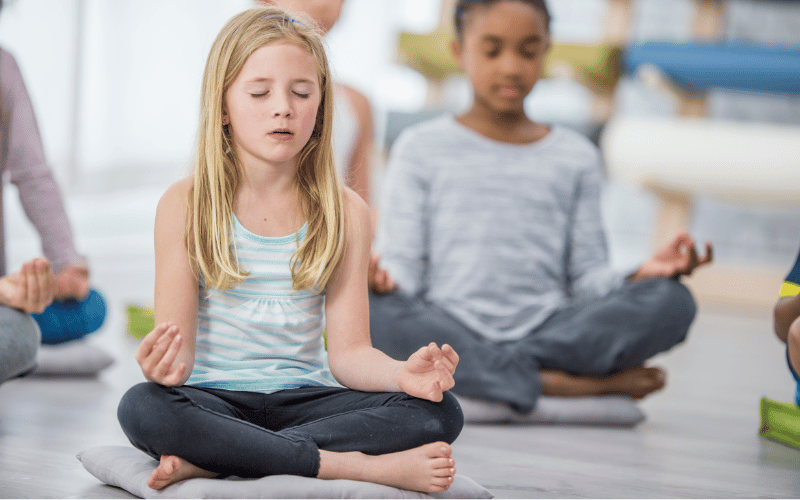Teaching Kids to Breathe: Simple Breathing Techniques for Relaxation and Focus
In a world where distractions abound, teaching kids to breathe mindfully can pave the way for relaxation, focus, and self-awareness. From boosting academic performance to enhancing emotional intelligence, simple breathing techniques can empower children to navigate life with grace and resilience. Dive into this comprehensive guide to discover easy-to-follow methods and their remarkable benefits.

The Power of Deep Breathing for Kids
Harnessing a Calm Mind Through Conscious Breaths
Breathing exercises can serve as a potent tool in helping kids cultivate inner calm, especially in stressful situations. When children learn to control their breath, they can better manage their emotions, minimize anxiety, and foster relaxation. Moreover, deep breathing can enhance focus and concentration, leading to improved academic performance and heightened self-esteem.
Top 5 Simple Breathing Techniques for Kids
Effective Exercises to Boost Relaxation and Focus
Belly Breathing: Encourage your child to place one hand on their chest and the other on their belly. Instruct them to breathe in deeply through their nose, letting their belly rise, and then exhale through their mouth, allowing their belly to fall. This technique can be practiced for five to ten breaths, helping to calm the mind and body.
4-7-8 Breathing: Also known as the “relaxing breath,” this exercise involves inhaling for four counts, holding the breath for seven counts, and exhaling for eight counts. Repeat this process four times, promoting a sense of tranquility and mental clarity.
Balloon Breathing: Have your child imagine they are blowing up a balloon with each breath. Instruct them to inhale deeply through their nose, filling their lungs with air, and then exhale slowly through their mouth, as if releasing the air into the balloon. Repeat this process several times for optimum relaxation.
Lion’s Breath: This playful technique involves inhaling deeply through the nose and exhaling forcefully through the mouth while sticking out the tongue and widening the eyes. Lion’s breath can help release tension and re-energize the body.
Alternate Nostril Breathing: Guide your child to gently close their right nostril with their thumb and inhale through the left nostril. Then, have them close their left nostril with their ring finger and exhale through the right nostril. Switch sides and continue for a few rounds, promoting balance and concentration.
Incorporating Mindfulness in Breathing Exercises
The Key to Greater Emotional Intelligence and Self-Awareness
Integrating mindfulness into breathing exercises can enhance self-awareness, emotional intelligence, and overall mental well-being. Encourage your child to pay attention to the sensation of their breath, observing their thoughts and emotions without judgment. This practice can help them develop greater self-awareness, empathy, and emotional resilience.
FAQs: Teaching Kids to Breathe
At what age can I start teaching my child breathing exercises?
Although there is no specific age requirement, children as young as three or four can begin learning simple breathing techniques.
How often should my child practice these breathing exercises?
Daily practice is ideal, but even a few times a week can yield noticeable benefits.
Can I practice these breathing exercises with my child?
Absolutely! Practicing together can strengthen your bond and encourage a shared mindfulness practice.
Are these breathing exercises suitable for children with special needs?
Yes, many of these exercises can be adapted for children with special needs, offering relaxation and focus benefits. Consult with a professional for specific guidance.
How can I make breathing exercises fun and engaging for my child?
Incorporate games, storytelling, or visualization techniques to make the exercises enjoyable and captivating. Tailor the practices to your child’s interests and preferences, ensuring they remain engaged and motivated.
Creating a Relaxing Environment for Breathing Exercises
To optimize the effectiveness of these breathing techniques, create a calming and comfortable environment for your child to practice. Choose a quiet space, free from distractions, and consider using soft lighting, soothing music, or aromatherapy to enhance relaxation. Establishing a consistent routine can also help your child look forward to their mindfulness practice, fostering a lifelong habit of conscious breathing.
The Lifelong Benefits of Breathing Techniques for Kids – Investing in Your Child’s Emotional and Mental Well-Being
By teaching kids simple breathing techniques, you are equipping them with valuable tools to navigate life’s challenges with resilience and grace. The benefits of relaxation and focus extend beyond the present moment, fostering emotional intelligence, self-awareness, and mental well-being that will serve your child throughout their life. Embrace the power of conscious breathing and witness the transformative impact on your child’s overall development.
Conclusion
In conclusion, teaching kids to breathe mindfully through simple breathing techniques is an invaluable investment in their emotional and mental well-being. These practices not only promote relaxation and focus but also cultivate emotional intelligence, self-awareness, and resilience. By creating a soothing environment and integrating mindfulness into the exercises, you can help your child harness the transformative power of conscious breathing.